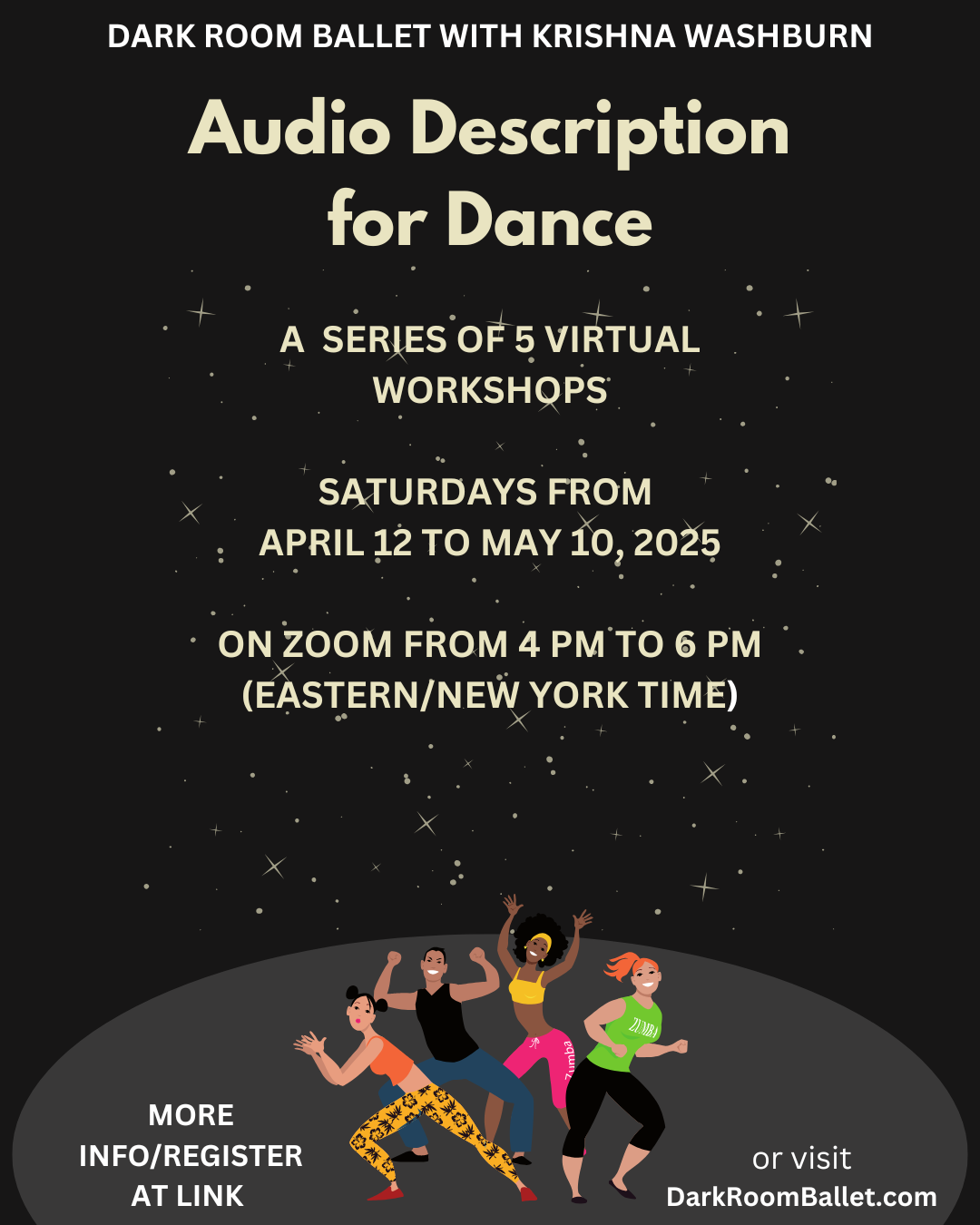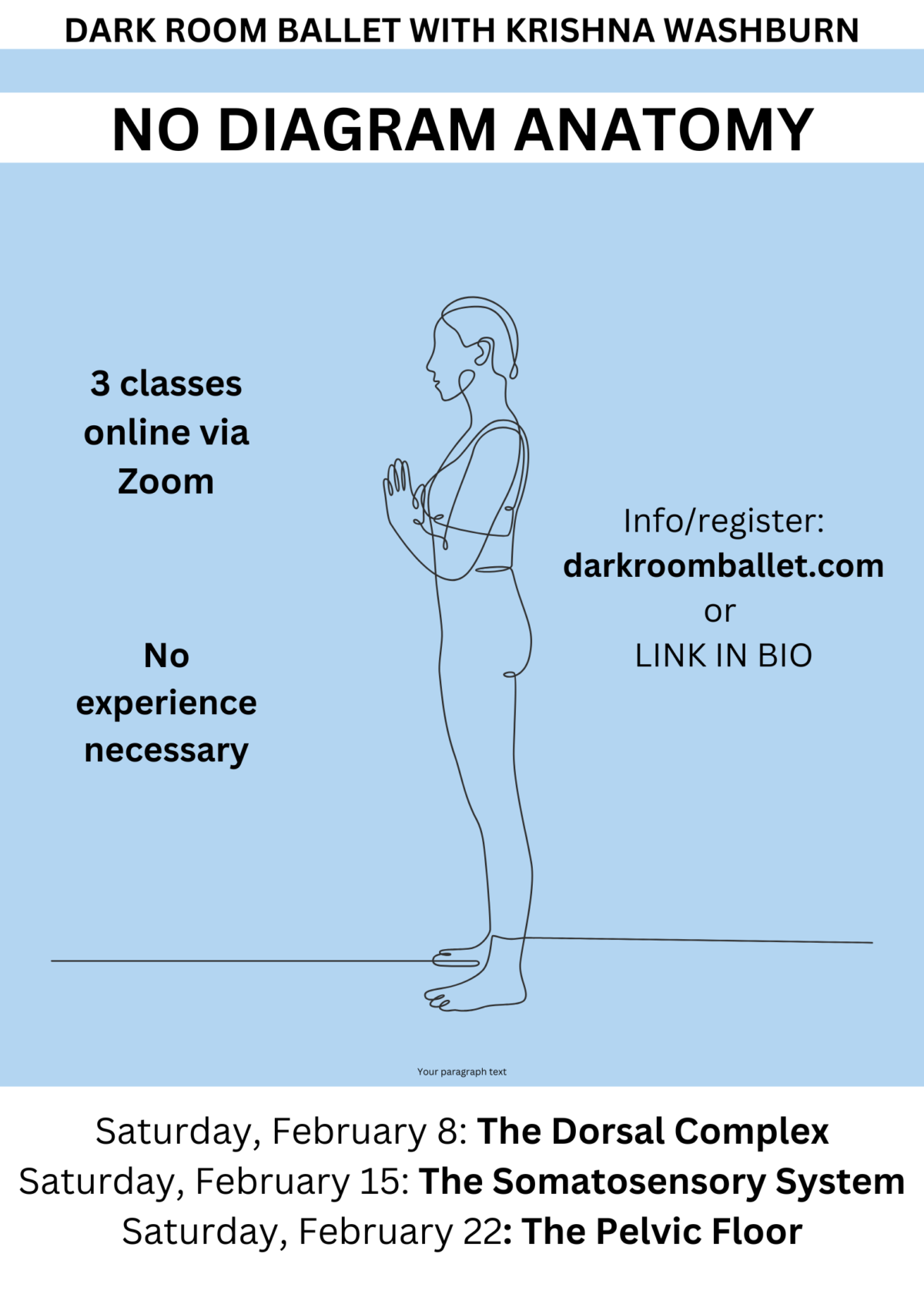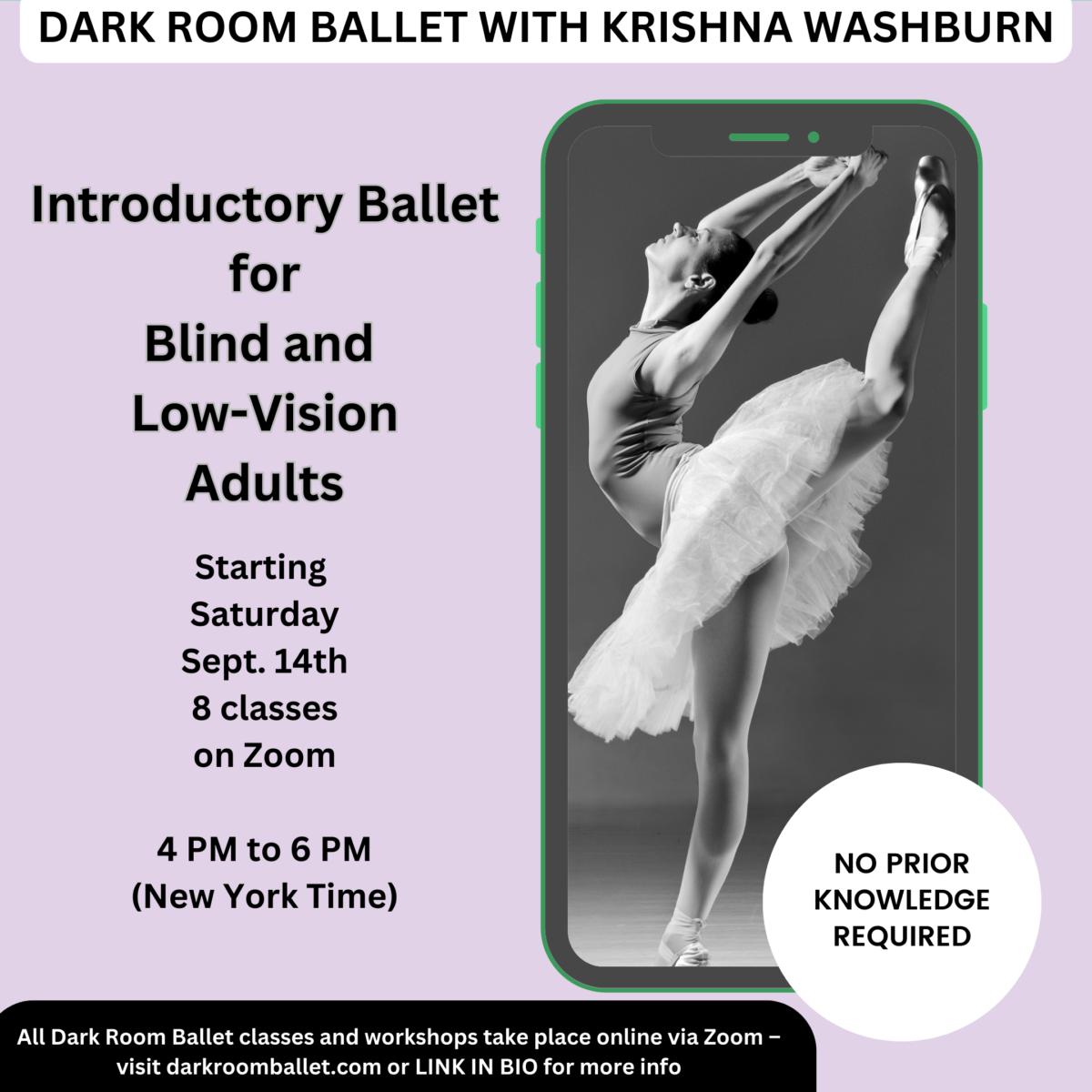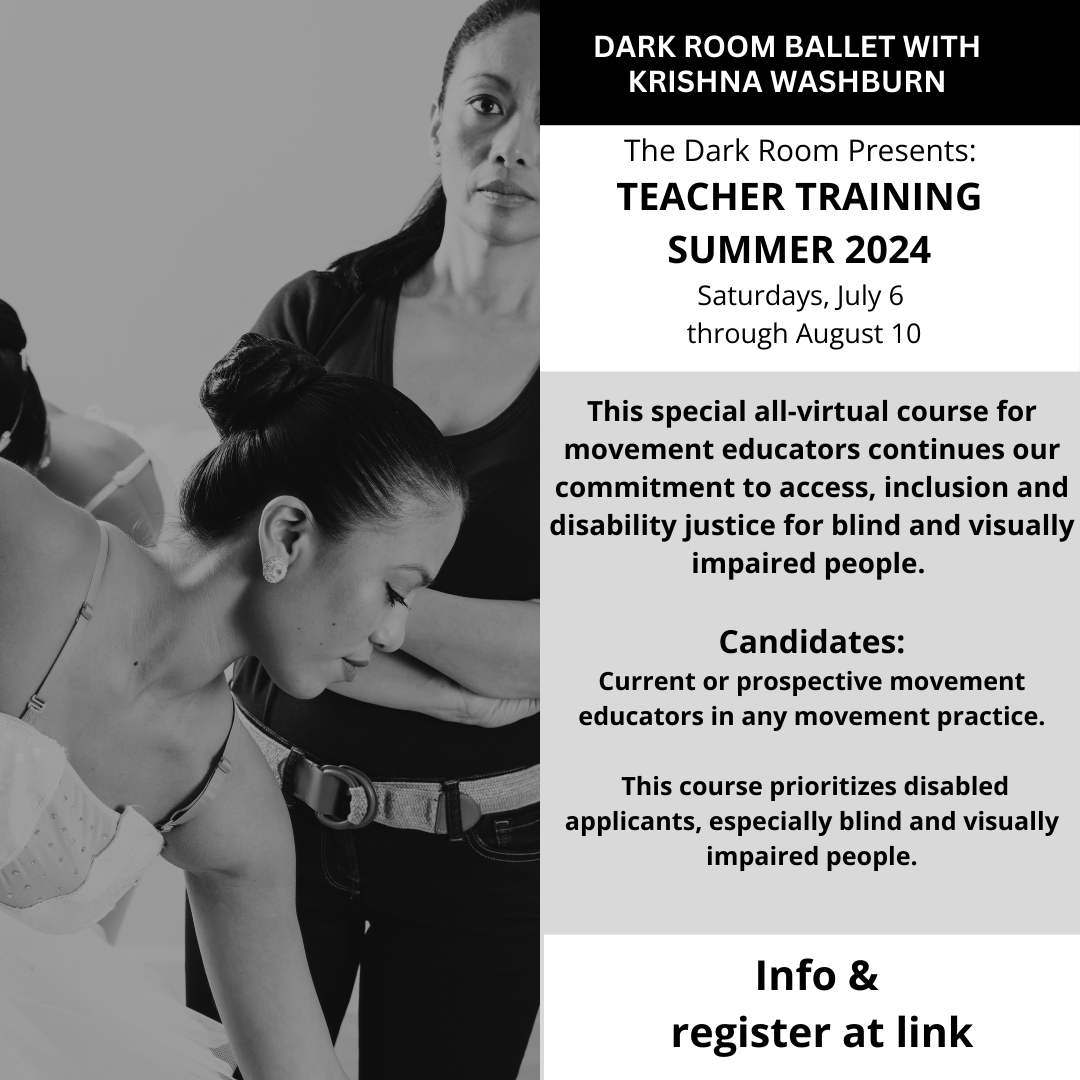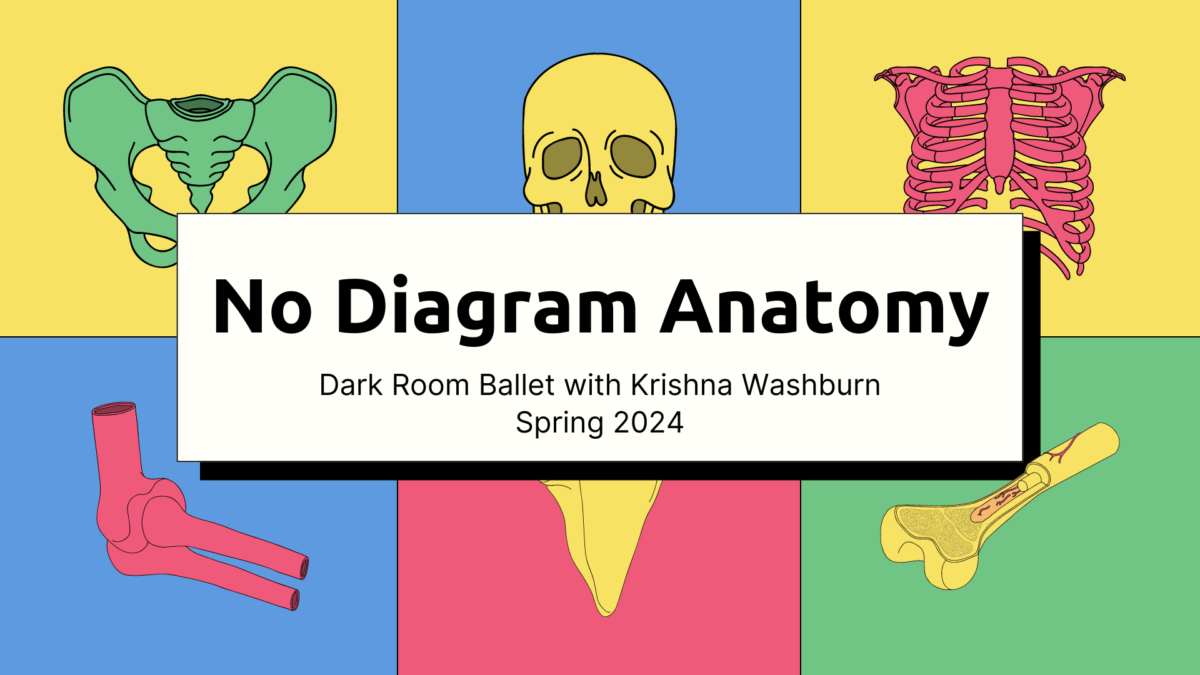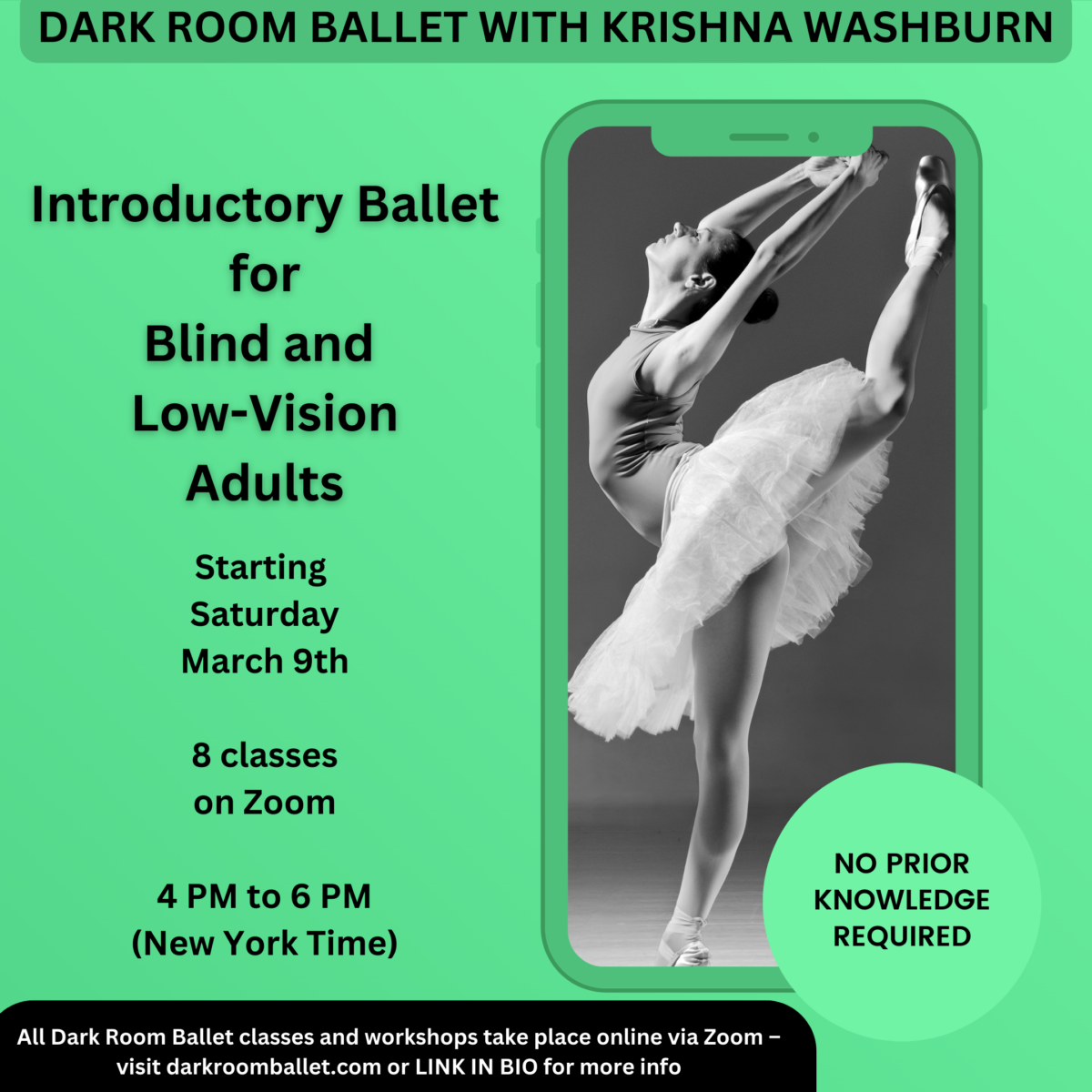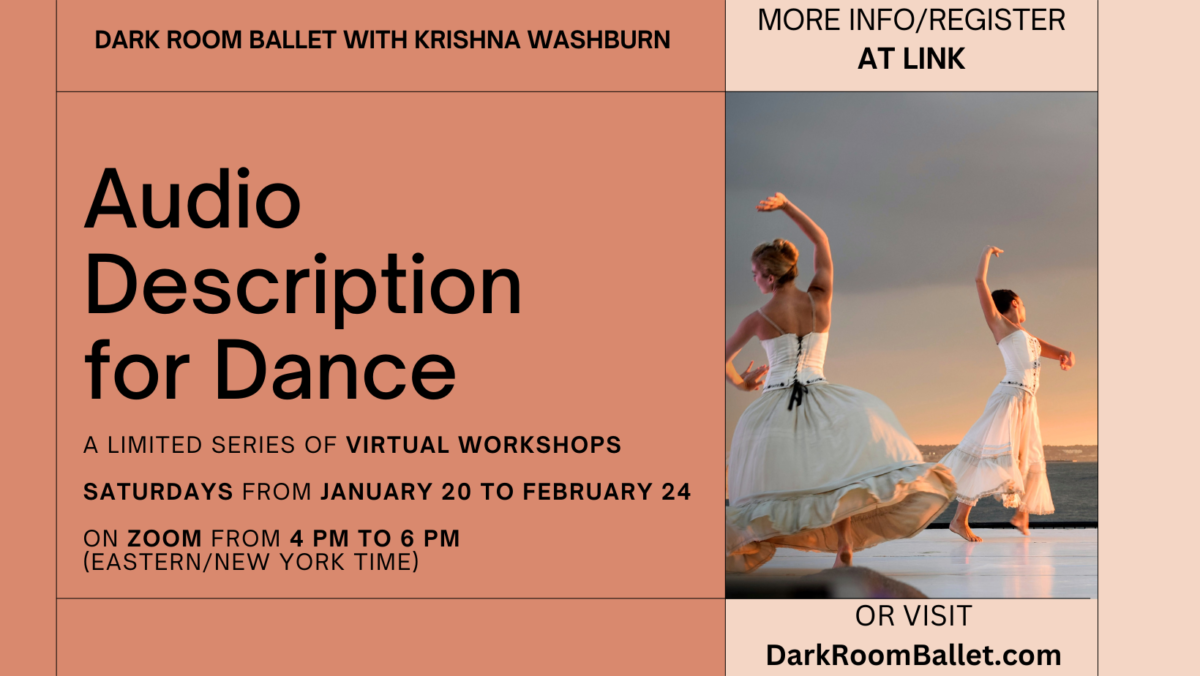There is so much to look forward to in the Dark Room Ballet community in the coming months.
Dark Room Ballet with Krishna Washburn will be hosting several amazing blind and visually impaired teaching artists who are highly experienced and deeply passionate about sharing their artistic knowledge — to be a disabled artist today is to be someone living in truth.
Join us for the Dark Room Ballet Collegium!
These upcoming workshops are open to all adult students, regardless of experience.
So far, the following virtual workshops are scheduled – all via Zoom (listings are in Eastern Time).
Visit the links to each workshop to learn more!
If you are interested in attending any or all of these workshops, please email info@darkroomballet.com to begin the registration process.
Improvisation Intensive Workshop Series with Shannon Brooks
Four dates in October:
- Thursday, October 9, 2025 from 6 PM to 8 PM
- Saturday, October 11, 2025 from 4 PM to 6 PM
- Thursday, October 16, 2025 from 6 PM to 8 PM
- Saturday, October 18, 2025 from 4 PM to 6 PM
Musicality Concepts in Ballet — A Pro-Level Intensive Workshop Series with Hannah Werbel
Four dates in October and November:
- Wednesday, October 22, 2025 from 8 PM to 10 PM
- Saturday, October 25, 2025 from 6 PM to 8 PM
- Wednesday, October 29, 2025 from 8 PM to 10 PM
- Saturday, November 1, 2025 from 6 PM to 8 PM
Sensory Beyond Sight, a Choreographic Workshop Series with Davian “DJ” Robinson
Four Saturdays in November:
This four workshop series discusses finding inspiration, creating physical records of choreography and choreographic staging as a memory and communication device, and is rooted in body and breath awareness.
- Saturday, November 8, 2025 from 4 PM to 5:30 PM
- Saturday, November 15, 2025 from 4 PM to 5:30 PM
- Saturday, November 22, 2025 from 4 PM to 5:30 PM
- Saturday, November 29, 2025 from 4 PM to 5:30 PM
Developing Your Voice Intensive with Alex Bulmer
In December, this special two-day series explores the physicality and anatomy of the voice and language, with a focus on the vocal skills of audio describers on Wednesday, and expanding on those skills for self-describing dancers on Thursday.
- For Describers of Dance: Wednesday, December 3, 2025 from 4 PM to 6 PM
- For Self-Describing Dancers: Thursday, December 4, 2025 from 4 PM to 6 PM
Vortex Workshop with Christopher “Unpezverde” Núñez
Vortex explores the anatomical planes (sagittal, transverse, frontal) and the axes of movement (anteroposterior, mediolateral, longitudinal) through the body and space/time. Vortex is spatial alchemy. Disabled dancers learn to navigate internal and external spaces using our heritage, lineage, memory, proprioception, breathwork and magical existence.
- Saturday December 6, 2025 from 4 PM to 6 PM
A Practice of Being Workshop with Kayla Hamilton
We’ll move together—no set steps, no pressure to perform. Just breath, curiosity, and a willingness to see what unfolds. Movement may be small or bold, quiet or expansive, playful or still. Each moment will invite the next.
For anyone ready to explore movement freely, trust their impulses, and say “yes” together.
- Wednesday December 10, 2025 from 6 PM to 8 PM
And returning in February 2026 for eight consecutive Saturdays from 4 PM to 6 PM:
Dark Room Ballet Introductory Ballet Class
This series prioritizes blind and low-vision adult students.
This repeating series of eight classes introduces students to necessary anatomical concepts like turnout, torso stability, foot sensitivity and mobility, sightless balancing, and the use of a taped floor for orientation.
- Saturday, February 21, 2026
- Saturday, February 28, 2026
- Saturday, March 7, 2026
- Saturday, March 14, 2026
- Saturday, March 21, 2026
- Saturday, March 28, 2026
- Saturday, April 4, 2026
- Saturday, April 11, 2026
Link to learn more about Saturday Introductory Level Classes
